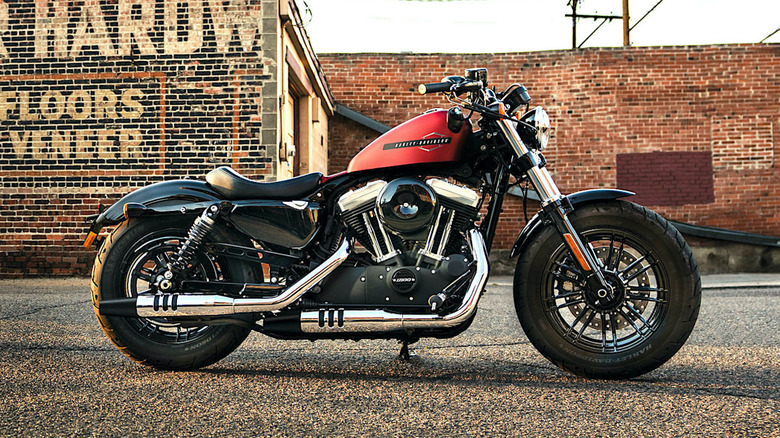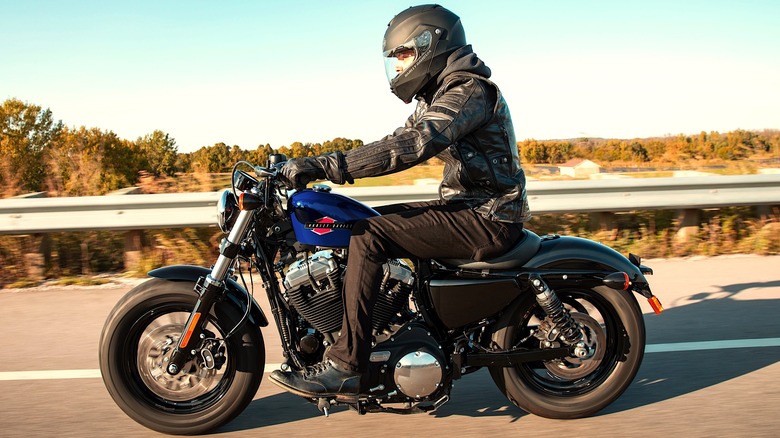What Ever Happened To The Harley-Davidson Forty-Eight Motorcycle?
With well over a century's worth of motorcycle production to its name, Harley-Davidson's line of road-chewing bikes is impressive, to say the very least. "Iconic" might actually be the better word, as the manufacturer has put some of the best bikes in existence on the road since its founding, with its Sportster line no doubt ranking high on the list of its most-loved makes. Harley's beloved bobber first debuted in 1957 and proved such a hit, the manufacturer has kept some version of the Sportster in production ever since.
Among the more recent additions to Harley-Davidson's celebrated lineup was the Forty-Eight, which entered the Sportster chat in 2010. Reportedly named after the famed "peanut" fuel tank that Harley debuted in 1948, the fat-tired, low-riding, and retro-inspired bike was well-liked and well-reviewed upon its debut. Some moto pros, however, admitted to enjoying its eye-catching style a bit more than its ride. Nonetheless, the Forty-Eight was deemed by many as a welcome option for the city that also satisfied the need for speed on the freeway.
The Forty-Eight remained a staple of the Harley-Davidson lineup for more than a decade, with the 2022 model year proving the end of the road for the popular build. Though some were perplexed by the decision to phase out the Forty-Eight, it was apparently made as part of a much wider change in direction for Harley-Davidson. And yes, that change affected several bikes in the Sportster line.
The Forty-Eight died when Harley-Davidson ended its Evolution-powered Sportster line
When the axe officially fell on the Harley-Davidson Forty-Eight, it was largely the result of the company deciding to pull the plug on all of its Sportsters equipped with the celebrated Evolution (Evo) Engine. Harley-Davidson has, of course, continued to manufacture Sportsters in the ensuing years, with the make likely to be part of the company's lineup as long as HD is still in business. However, newer Sportsters are equipped with Harley-Davidson's more powerful Revolution Max engines, and for reasons unbeknownst to the Harley-loving masses, the Forty-Eight didn't make the Revolution cut.
The Forty-Eight was not the only build affected by the death of the Evo-powered Sportsters, as it also meant the end of the line for the likes of the Iron 883 and the Iron 1200, the latter of which had already ceased to be available in Europe. The move was widely regarded as the end of an era for Harley-Davidson, in no small part because the Sportster lineup had been powered by Evolution engines since 1986.
If you're unfamiliar with the Evo's legacy, the air-cooled V-twin engine was developed during a tumultuous time in Harley-Davidson's history, as years of lackluster sales and internal strife had left the iconic company on the precipice of bankruptcy by the early-1980s. But bikes equipped with the powerful, more reliable Evo engines proved an instant hit with the Harley-Davidson fanbase and sold so well that many credit the engine for the brand's resurgence. Assuming that is the case, one can only imagine that Harley bosses did not take the decision lightly to end the last of the Evo bikes.

